The Wreck of the S.S. Catala
Podcast: Play in new window | Download | Embed
Subscribe: Apple Podcasts | Spotify | Amazon Music | RSS | More
I’ve spent a lot of time in Ocean Shores, Washington, over the years…hiking around Damon Point, rock-hopping at the north jetty and exploring the Coastal Interpretive Center (which is absolutely worth seeing, if you ever get the chance). But one of the more memorable moments in my Ocean Shores experience was getting to “discover” a shipwreck as the tempestuous weather began shifting the dunes and slowly exposing its hull at the beginning of the century. That ship, it turns out, was the S.S. Catala – a Canadian coastal passenger and cargo steamship built in 1925.
When the Union Steamship Company of British Columbia launched the Catala in 1925, the company was already 36 years into operation. Founded in 1889, the same year Washington became a state, Union had supplied transportation for the Klondike Gold Rush as well as World War I before adding Catala to its impressive lifetime roster of 51 ships. Union had been adding ships to its fleet almost yearly until Catala, built in Montrose, Scotland, which was the last Union ship built for nearly 20 years.
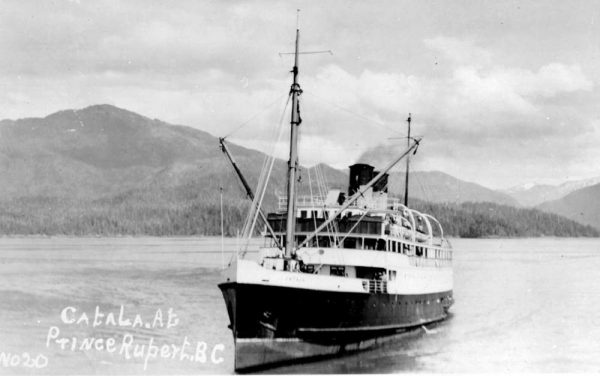
Tonnage: 1,476 gross and 851 registered
Length: 229 feet
Beam: 37.1 feet
Depth of hold: 18.4 feet
Passengers: Licensed to carry 267, stateroom capacity for 120, steerage bunks for 48
Cargo capacity: 300 tons, including a refrigerated chamber for 40 tons of boxed fish
Top speed: 14 knots
Catala was named after Catala Island, which is at the entrance of Esperanza Inlet on the west coast of Vancouver Island. Catala Island had in turn been named in honor of Catholic missionary Fr. Magin Catalá, who was at Santa Cruz de Nuca on Vancouver Island in 1793.
Catala spent most of her operating career from 1925 to 1958 on the British Columbia Coast, carrying coastal freight and passengers. But just over two years into her career, the Catala – traveling through BC’s Cunningham Passage – struck Sparrowhawk Reef in reduced visibility conditions. Chief Officer Ernest Sheppard was at the helm and missed the warning buoy due to glaring sunlight. Capt. Alfred E. Dickson, feeling the impact, raced to the bridge and ordered the lifeboats lowered immediately. Passengers began abandoning ship, and the local Native population – witnessing the crash from shore – took to their canoes and assisted with the rescue. Ultimately, everyone on board survived the crash.
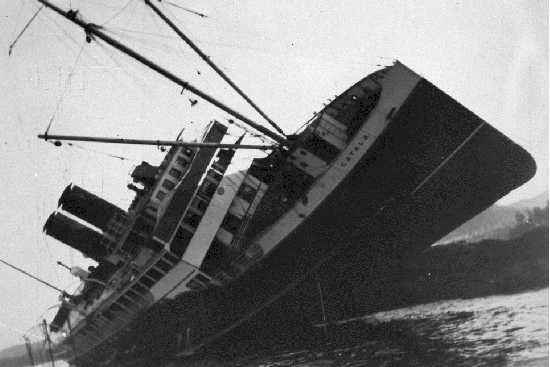
Sparrowhawk Reef lay between seven and 23 feet deep beneath Cunningham Passage, depending on the tides, and at low-tide the Catala rested mid-air between two rock pillars with her bow sticking out so much that there was a fear the ship might break in half, Titanic style. Efforts by a number of tugs to free the Catala failed, specifically the efforts of the Salvage Princess and the Salvage King. Union finally relinquished ownership of Catala to the insurance company, but indicated that they’d be willing to buy her back if she could be repaired.
Eventually, by incrementally blasting out the rock pillars, and patching the holes in the hull as blasting proceeded, a salvage crew was able to free the ship and repair the damage at a cost of $175,000. Adjusting for inflation, that amounts to nearly $2.6 million today. True to its word, the company bought her back and Catala resumed her weekly sailing schedule out of Vancouver.
For the next 30 years, the Catala steamed north and south along the western Canadian coastline without incident, until she was finally sold to new owners in British Columbia for use as a fish-buying ship. But her career change didn’t last long. By 1962, the new owners found a new purpose for Catala to take advantage of a once-in-a-lifetime opportunity taking place just south in Seattle. It was The Century 21 Exposition (also known as the Seattle World’s Fair), held April 21st through October 21st of that year. Nearly 10 million people attended the fair – which will for sure be a future Washington Our Home podcast episode. The Catala’s owners had her converted into something called a “boatel” which is obviously a Portmanteau of the words “boat” and “hotel.”
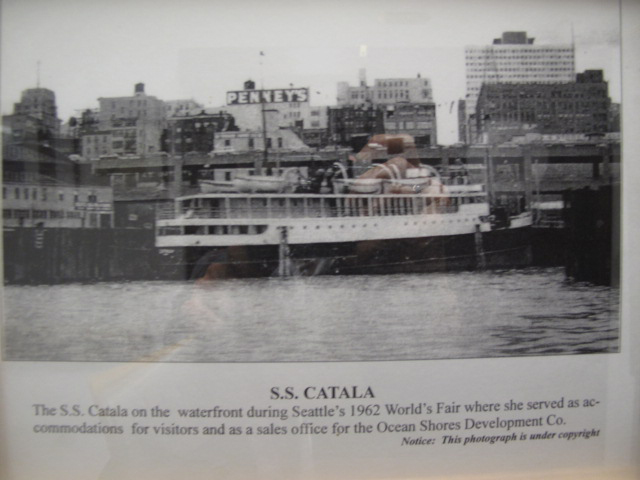
Once the fair ended and the crowds dispersed, Catala was moved south to California and was used as a floating restaurant for a few months. When that endeavour went belly-up, she was brought back north again and found a home in Ocean Shores, Washington, where she again found work as a floating boatel. For three wonderful years, Catala helped visitors to Washington’s marvelous coastline enjoy their stay in a fun and unique fashion. There’s no telling how many families hold cherished memories of playing on the beach, frolicking in the surf and resting their heads back in their boat-hotel.
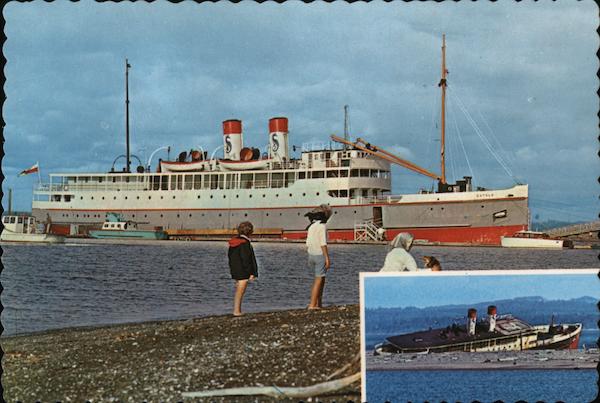
Of course, I’m speculating. For all I know, it could have been a rat-trap. After all, it was already 40 years old and who knows how much or how little renovation the new owners invested in her? One website cited it as “a hotel for charter fishermen complete with poker games and prostitutes.” Materials at the Ocean Shores Interpretive Center claim that “guests had their choice of staying in the overnight accommodations, enjoying dining and the activities of several lounges, and fishing for salmon, all aboard the beautiful refurbished ship.” I’d like to think that she was just as grand a recreational vessel as she was a passenger and freight ship.
It was a cold, wet and blustery New Years Day in 1965 when the winter storm hit and wreaked havoc along Washington’s coastline. Entire beaches changed their shape or disappeared completely as the pounding waves ate away at the shore. New beaches were formed by that sand being deposited elsewhere. And in the tumult of the storm, Catala’s moorings broke loose, setting her adrift in the undulating surf. The 229-foot hotel rolled violently from port to starboard and back again for who knows how long until the waves finally drove her like a spear tip deep into the heart of Damon Point, sometimes called Protection Island, at the mouth of Grays Harbor.
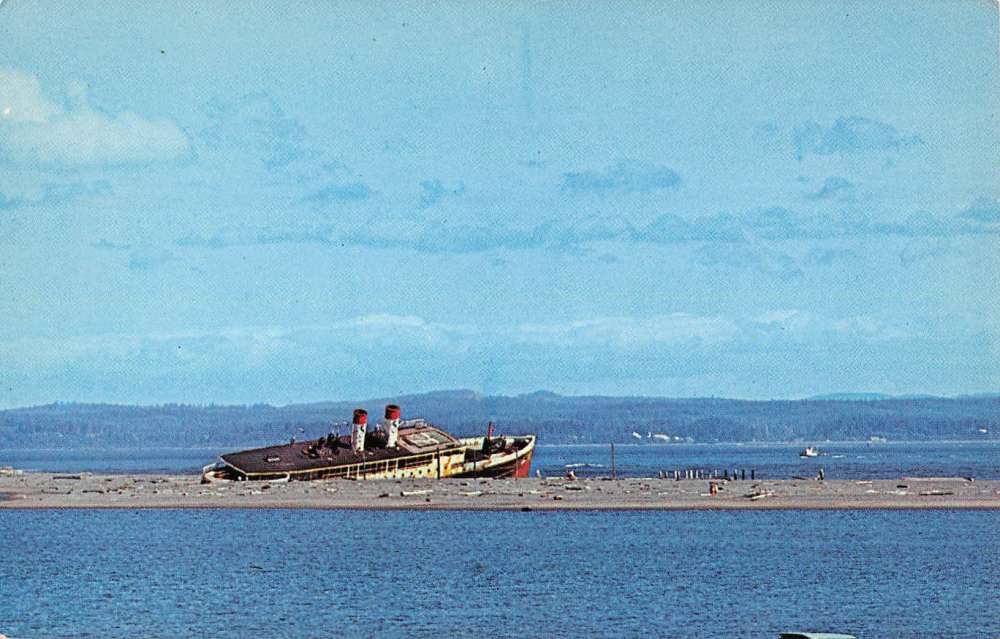
And there, she stayed. Efforts to re-float Catala failed, and the wreck was left to decay at the beach on Damon Point. For more than 20 years she was vandalized and pillaged, and in the late 1980s some poor girl fell through a rusted portion of her deck, breaking her back. Her family sued the State of Washington, which in turn ordered the wreck cut up. Catala was torn down to sand level and buried, left to memories and sand crabs for nearly 20 more years…but much like that New Years Day storm in 1965, subsequent storms began to remove and displace material from Catala’s sandy grave, and little by little, she began to see the light of day again until a succession of winter storms in the late 1990s exposed enough hull to once again make her an unofficial tourist attraction.
I’ve spent nearly as much time as an actual resident of Oceans Shores exploring the beaches, specifically around Damon point. I made a video about my search for Snowy Owls on Damon Point several years ago. And in 2005, I got to see the exposed wreck of the SS Catala with my own eyes. Though mostly rusted through, you could still make out portholes and an occasional hatch, now welded shut. Standing amidst the ruins of a once proud shipping vessel and later iconic floating hotel was certainly something to behold.
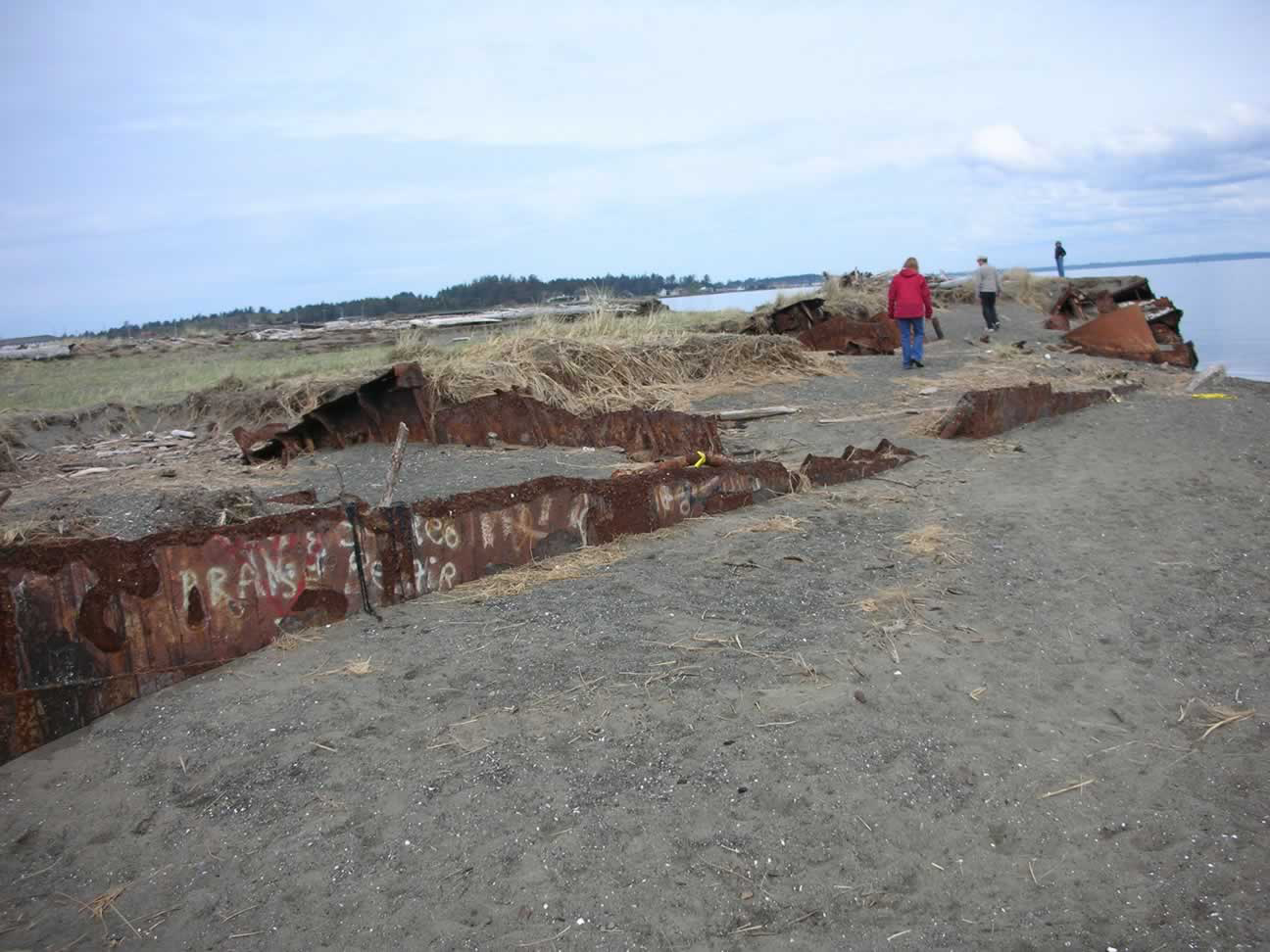
Then, the following year, something happened that drove the last nail into Catala’s proverbial coffin. The storied ship that had seen just as much time above ground as below was about to meet her final and most resolute end.
Less than a year after I got to explore the wreckage in person, a beachcomber exploring the wreckage poked a piece of driftwood into an opening on the hull’s side and discovered a thick black sludge dripping from the end of the stick.
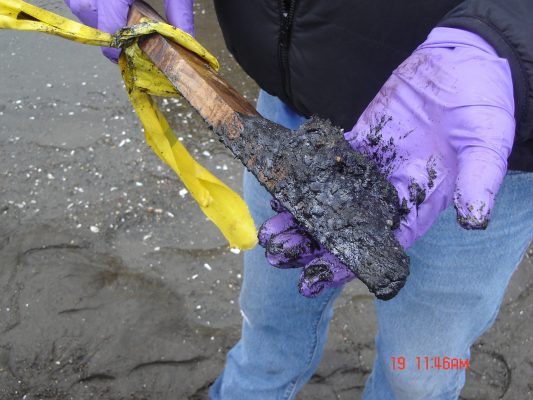
In April 2006, the state Department of Ecology quickly teamed up with Natural Resources, Fish and Wildlife, and Parks and Recreation, as well as local agencies with the city of Ocean Shores and Grays Harbor County and Federal agencies including U.S. Fish and Wildlife, the U.S. Army Corps of Engineers and the U.S. Coast Guard to plan the cleanup of oil from the Catala and prevent the threat of an oil spill from her unstable tanks.
Damon Point provides important habitat for a range of wildlife, including Dungeness crab, harbor seals, salmon, trout and herring. Some nesting birds, such as the western snowy plovers and streaked horned larks, are threatened or candidates for the federal Endangered Species Act. Gray whales migrate just offshore and feed in the bay. The agencies knew the risk of an oil spill would require a well-crafted response to protect the public, the workers and the environment.
After cordoning off the wreck, they realized there were many challenges to reaching the oil in the tanks of the Catala. The ship lay at an angle from bow to stern and tilted at almost 20 degrees from port side to starboard side. While the bow was exposed by winter storms in 2006, the stern was buried nearly 20 feet below the surface. In addition, the back half of the 215-foot-long hull was covered by seawater. In order to get workers safely into the tanks at the bottom of the ship in this dynamic environment, a complicated plan had to be carried out.
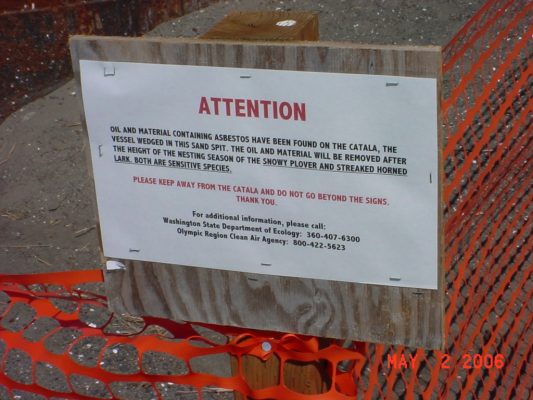
The main features of the plan were to completely surround the ship with a sheet pile wall that was driven 35 feet below surface, then remove sand on top of the hull by using an excavator and heavy-duty vacuum systems. This part was tricky because the hull still moved with the rise and fall of the tides. Crews cut openings in the tank tops and pump ed out the oily water and liquid oil. Then, they had to heat up the thick oil with a hot water-circulating system so it could be pumped out.
After they got everything they could without going inside, workers were sent inside the tanks to scrape, steam clean, and wash down the remaining oil. When finished, they cut the cleaned tanks from the hull and lifted them out of the sheet pile cell to be cut into 5-foot by 5-foot sections for off-site recycling, along with the remaining components of the hull. Then, crews sampled the sand beneath the hull after it was completely removed to ensure the sand was clean. Once they got the green light, they removed the sheet pile wall, reshaped the beach sand in the work zone and replaced drift logs. Finally, the heavy equipment and vehicles left the site and nary a shred of evidence could be found to indicate there had ever been a once-proud 81-year-old passenger liner turned quirky restaurant and hotel buried in the sand.
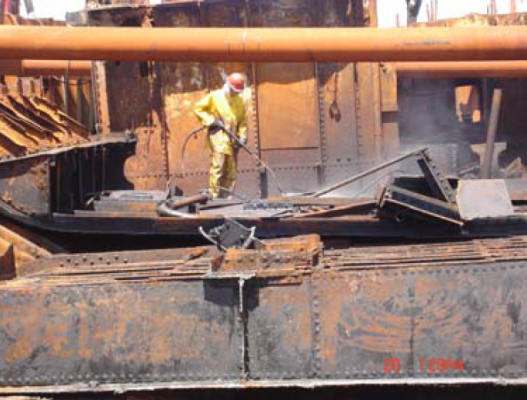
Heavy fuel oil removed and recycled: 34,500 gallons
Oily water collected and treated: 360,000 gallons
Oil-contaminated sand removed: 2,585 tons
Asbestos-containing materials removed: 33 cubic yards
Scrap steel removed and recycled: 345 tons
Worker hours with no injuries: 36,000 hours
Oil spilled as a result of site operations: 0
Total project cost for Ecology including oil removal and beach restoration: $6.5 million
Total cost for Natural Resources to remove the ship’s hull: $0.5 million
By the end of August 2007, all of the oil, asbestos-containing materials, oil-contaminated sand, and the remaining hull of the Catala had been completely removed from the beach and sent offsite for recycling, treatment or disposal. Visitors to Damon Point today would never know of the events that unfolded in the sand between 1965 and 2006…and frankly, that’s probably for the best. The potential threat to the natural area and nearby wilderness preserve would have been incalculable had those tanks fully ruptured, and we should feel fortunate to live in a state that would rather spend the money to clean it up instead of keeping it buried and looking the other way.
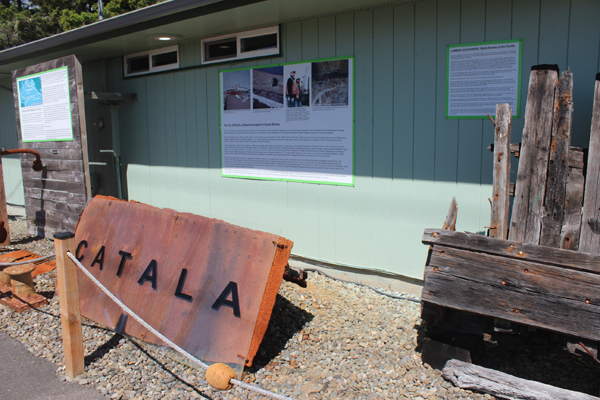
As for the history of the S.S. Catala, much of that is preserved in great detail at the nearby Coastal Interpretive Center in Ocean Shores. You can pick up a brochure along with a poster of all the major shipwrecks in the vicinity throughout the past several hundred years. There are interpretive movies to watch, books to read and buy, and the last remaining pieces of the Catala to touch and imagine.

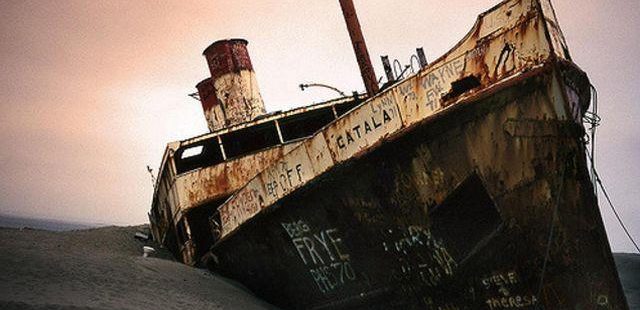
I lived in Ocean Shores in the 70’s and remember going out to play on the wreck of the Catala regularly. And then later when it was initially removed, the ‘landmark’ was gone & it was so strange. My mother still has a painting of the wreck. Thanks for the story!
So from 1965 when it went ashore until 2006, (including a period when the boat was cut up and buried to ground level) when a tourist “discovered” a thick oily sludge… hmmmm That seems like a big “L” for the state.
That’s amazing! Do you think you could get pictures and either post them on the blog or send them to me?
There are still remnants of the wreck on the beach… the point is eroding away… I have photos of pieces protruding from the sand.. this recent Labor Day weekend of 23 there is a tiled bathroom floor exposed at low tide.
I love hearing stories from people who have personal experience with aspects of Washington’s history. Thanks for sharing your memories!
My father, Raymond W. Harvey, my brother, Ray Jr. & family friend, Niles Nelson, bought the salvage rights to the Catala. My brother used his scuba gear to seal off openings that were underwater at low tide then they pumped out the water & had the Catala floating @ high tide. But, since it lay tilteds to one side, the tides had washed so much sand into the hull that, when the tide went down, the weight of the sand broke the cables that had pulled & held it upright. They lacked the funds to get pump that would allow them to remove or reposition the sand &, after failing several more attempts, finally had to abandon the effort. I have several portholes, from the Catala, as well as some of the mahogany paneling from its cabins. Being legally blind, I made myself a white staff out of a piece of ironwood railing from the Catala. Our diving boat, the Pronto II, can be seen, moored next to the Catala, in some B&W pictures of the wreck.
Pingback: How Was SS Catala Moored at Ocean Shores? | Oak Bay Starfish
What great memories! Thanks for sharing them here!
My mother, aunts and grandmother worked on the Catala. I played on it all my childhood as it lay beached. Few people realize that the town was actually a hangout of some very rich and famous folks and that is what our it on the map. John Wayne, Pat Boone, among many others of notorious wealth that my grandmother hung out with really had the area hopping back in the 50s and 60s. I went there 4 years ago in a visit and was amazed at the growth, but thrilled that it still has the same feel. I’m proud to feel like my blood is part of Ocean Shores forever!
Completely. Except for a few bits and pieces on display at the nearby Coastal Interpretive Center and the Museum of the North Beach in Moclips. Check them out when you get a chance!
So – it’s gone now ?????
Thank you for this interesting history of the ship Catala I live in ocean shores for going on 3years did not know the rich history of this I’ll fated ship and the native peoples helping rescue the passengers
I played on the Catala for years! It was my favorite part of Ocean Shores (along with the fishing). I had no idea what happened to it, so thanks for the article.
I was in Ocean Shores, Wa.1963 to 1967 and my Sister and I played on the SS Catala